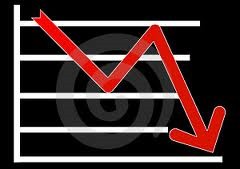MSCI Rebalancing Sinks Markets – Micro-caps Fair Better
 Micro-Cap Market Report: May 31, 2013 – The month of May is over and the bulls were able to defy the conventional wisdom of “Sell in May and Go Away.” However, you’d be hard-pressed to find smiles on any investors’ faces except those of us favoring micro-caps, given the dismal end to the month.
Micro-Cap Market Report: May 31, 2013 – The month of May is over and the bulls were able to defy the conventional wisdom of “Sell in May and Go Away.” However, you’d be hard-pressed to find smiles on any investors’ faces except those of us favoring micro-caps, given the dismal end to the month.
The S&P 500 did close May with a 2.1% gain, good for its seventh consecutive monthly increase, but the last two weeks of the month were not impressive.
Actually, the last day of the month was downright dreadful as all three of the major U.S. indexes lost more than 1%. Selling accelerated as the market drew to a close with the rebalancing of the MSCI indexes…Credit Suisse estimated $19 billion in total trading…with U.S. stocks seeing the greatest amount of net selling. I’ll have more to say about this in just a moment.
For the week, the S&P 500 lost 1.1% while the Dow Jones Industrial Average dropped 1.2%. An indication that technology shares are perking up, the NASDAQ Composite lost just 0.1%.
Micro-caps are not tied to the broad markets
Perhaps in a sign that the great cyclical rotation is gaining momentum, micro-caps were actually quite sturdy on the week. The iShares Russell Microcap Index Fund (NYSE: IWC) added close to half a percent on the week while the Guggenheim Wilshire Micro-Cap ETF (NYSE: WMCR) was double that with a 0.9% gain and is up over 20% YTD.
| The Markets @ 5/31/2013 | |||||
| Index | Close | Weekly | % Change | YTD Change | YTD% |
| DJIA | 15115.57 | -187.53 | -1.23% | 2011.43 | 15.35% |
| NASDAQ | 3455.91 | -3.23 | -0.09% | 436.4 | 14.45% |
| S&P 500 | 1630.74 | -18.86 | -1.14% | 204.55 | 14.34% |
| NYSE Comp | 9302.27 | -139.96 | -1.48% | 858.76 | 10.17% |
| NYSE MKT | 2364.99 | -37.43 | -1.56% | 9.33 | 0.40% |
| RUS 2000 | 97.8 | -0.08 | -0.08% | 13.72 | 16.32% |
| RUS MICRO | 61.3 | 0.21 | 0.34% | 8.98 | 17.16% |
| VANG INTL | 48.43 | -0.66 | -1.34% | 2.13 | 4.60% |
| CHINA INDEX | 4927.24 | 33.92 | 0.69% | 488.72 | 11.01% |
| EMERG MKTS | 6878.84 | -160.88 | -2.29% | -161.13 | -2.29% |
Market Report
Friday looked like a feeding frenzy
Red numbers flashed across the board in the last hour of trading on Friday as markets rebalanced and automated selling programs kicked in to exacerbate the loss. The “Sell in May and Go Away” crowd still didn’t have the last laugh but the last two weeks sure took some bloom off the rose. Mark Luschini, Chief Investment Strategist at Janney Montgomery Scott suggested the late afternoon swoon was “driven by computer models.”
OK…did you protect your profits with some intelligent stop-losses as we counseled in the past few issues? I hope you didn’t need them, but through the years they have helped us lock in some nice gains…especially in the faster moving micro-cap sector.
Oil prices gave back another two bucks this week…and gold strengthened a bit
The widely followed WTI Crude Oil price closed at $91.97 on Friday…off $2.18. Gold closed the week at $1,392.60, up $5.80 for the week.
The US Dollar was off again – losing $0.0038 to close at 0.7694 euros.
Reporting that bonds were off again is getting to be old news…The 10-year bond lost $1.32 to close at $96.34 and the 30-year bond lost $2.34 to close at $91.91.
Several market analysts have warned investors to move out of long-duration bonds to avoid heavy losses. The yield on a 10-year benchmark Treasury hit 2.17 percent last Tuesday, the highest level in over a year. The major concern for bond investors is the Federal Reserve, the biggest buyer of U.S. government bonds for the past few years. Will the Fed start tapering its purchases as the economy improves? (Bond yields and prices move in inverse direction).
If yields reach 2.5% by year-end as some suggest, losses are certain to mount.
Economic data mostly good
It was busy week on the economic data front, but that also meant some disappointment because data was good for the most part and stocks still closed lower.
In economic news, the Case-Shiller index of home prices in 20 major metro U.S. areas rose 10.9% in March while the 10-city index rose 10.3%. All 20 cities posted year-over-year growth with Phoenix, San Francisco and Las Vegas leading the way.
The Conference Board’s Consumer Confidence Index increased to 76.2 this month, good for the best reading since May 2008. Analysts expected a reading of 72.5. The April reading was 69.
On Thursday, the Commerce Department said U.S. first-quarter GDP grew 2.4%, missing economists’ expectations of 2.5% growth. Government spending plunged 4.9%, well ahead of the 4.1% estimate.
Jobless claims surprise economists
Initial claims for jobless benefits rose by 10,000 to 354,000 last week, according to the U.S. Labor Department. Economists expected a reading of 340,000 claims. The less volatile four-week moving average rose by 6,750 to 347,250.
The National Association of Realtors said its Pending Home Sales Index for April inched up 0.3% to 106. That is good for the highest reading since April 2010. Economists expected an increase of 1.1%.
Consumer confidence soaring even as spending slows
On Friday, the Commerce Department said consumer spending fell 0.2% last month and the March reading was revised lower to show a gain of just 0.1%. Excluding food and energy expenditures, consumer spending was flat last month.
The Thomson Reuters/University of Michigan’s final reading of May consumer sentiment jumped to 84.5 from 76.4 in April. That was the best reading since April 2007 and beat economists’ expectations for a reading of 83.7. Chicago PMI surged to 58.7 in May from 49 in April, easily topping economists’ expectations for a reading of 50. Readings above 50 indicate expansion.
Again, most of these reports can be considered “decent,” but the mixed bag on the consumer side could be a sign of some weakness ahead in discretionary names, including micro-caps.
The Bottom Line for Stocks
Suddenly, investors are worried about rising interest rates and there is evidence to support their concern. That presents a good news/bad news scenario for micro-caps.
Rising rates would be bad news for the few micro-cap telecom and utilities names out there. However, those same higher rates would be excellent news for micro-cap banks that have previously been hurt by low net interest margins.
Health care names should provide some shelter against rising rates as well. Further momentum for a legitimate cyclical rotation will boost materials micro-caps.
Research and Editorial Staff
MicroCap MarketPlace
Mike Casson, Executive Editor





